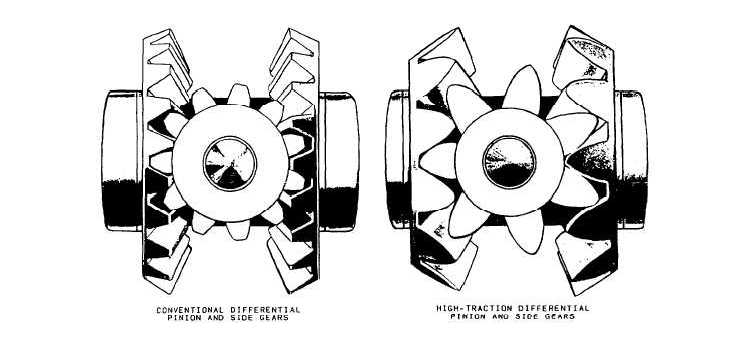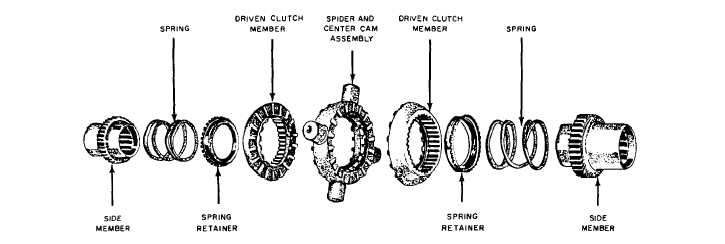
Figure 11-18. - Comparison of high-traction differential gears and standard differential gears.
that have fewer teeth and a different tooth form from the conventional gears. Figure 11-18 shows a comparison between these and standard gears. These differential pinions and side gears depend on a variable radius from the center of the differential pinion to the point where it comes in contact with the side gear teeth, which is, in effect, a variable lever arm. As long as there is relative motion between the pinions and side gears, the torque is unevenly divided between the two driving shafts and wheels; whereas, with the usual differential, the torque is evenly divided at all times. With the high-traction differential, the torque becomes greater on one wheel and less on the other as the pinions move around until both wheels start to rotate at the same speed. When this occurs, the relative motion between the pinion and side gears stops, and the torque on each wheel is again equal. This device assists considerably in starting the vehicle or keeping it rolling in cases where one wheel encounters a slippery spot and loses traction while the other wheel is on a firm spot and has traction. It will not work, however, when one wheel loses traction completely. In this respect, it is inferior to the differential lock.
With the non-spin differential (fig. 11- 19), one wheel cannot spin because of loss of tractive effort and thereby deprive the other wheel of driving effort; for

Figure 11-19. - No spin differential-exploded view.
Continue Reading